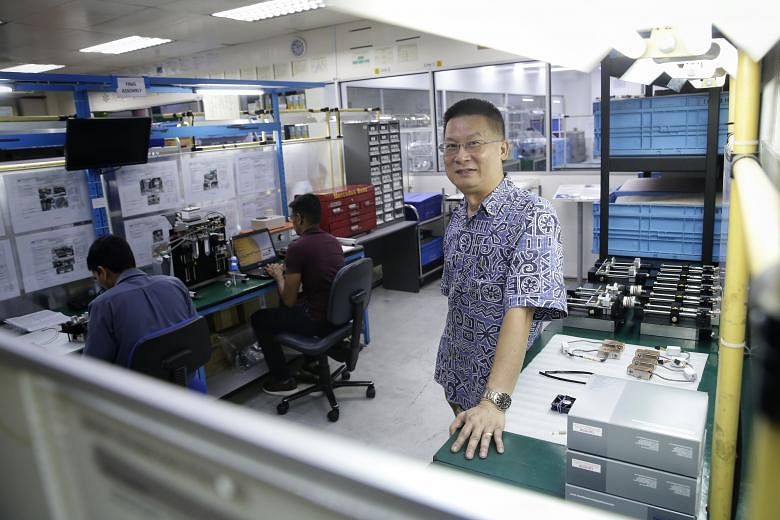Analysts and local industrial firms have welcomed a move by the Government to pilot a more flexible approach to industrial land zoning.
More relaxed industrial land zoning will help firms cope with changing business needs as they dial back manufacturing operations here, in favour of more research and development, they said.
The Government earlier this month said that it will pilot the more flexible approach in a new JTC Corporation multi-tenanted building in Woodlands North Coast that is due to be completed at the end of 2019.
The Urban Redevelopment Authority and JTC told The Straits Times: "Instead of the current 60/40 industrial quantum control regulated on JTC's industrial properties in the Business 1 zones, we will exercise a more flexible set of planning controls for the Business 1 component of this building."
The current guidelines for Business 1 zones - light industrial zones - require firms to devote at least 60 per cent of space to core industrial activities. The other 40 per cent can be used for auxiliary services.
-
60/40
The current guideline for Business 1 zones requiring firms to devote at least 60 percent of their space to core industrial activities, while the remaining 40 percent can be used for auxiliary services.
Analysts said that the pilot is timely and would benefit firms in "emerging industries". Mr Desmond Sim, head of CBRE Research for Singapore and South-east Asia, noted: "As we move more into the R&D and high-tech space, this rigid 60/40 rule could squeeze out firms that need a lot more space for office use to do research, and not so much industrial activities."
Businesses are largely in favour of the move, including precision engineering and medical device maker firm Racer Technology. Chief executive Willy Koh said: "Things are moving so quickly. In the past, you assessed your business plan every two years. Now, maybe every six months, you need to make changes."
The firm has three factories in Indonesia and two in Malaysia doing component manufacturing, while its facility here increasingly focuses on service-oriented activities such as marketing and research.
The prospect of being able to dedicate more space for R&D would support Mr Koh's plans to create more new products, including wearable technology that tracks the blood pressure and heartbeat of patients.
Another firm pushing into more R&D work is Rigel Technology, a provider of sanitary ware.
Chief operating officer Loh Hung Chee said that the firm had, over the last 15 years, offshored most of its manufacturing activities to the two factories that it acquired in China.
The idea is to have its headquarters and innovation centre in Changi Business Park to undertake more research, customer support as well as sales and marketing work.
Mr Loh said: "The flexibility will allow us to use space more efficiently for research. We want to drive more innovation and use smart technology in our products."
International Property Advisor key executive officer Ku Swee Yong suggests the Government could be even bolder, and consider scrapping B1 zoning altogether, allowing for the space to be used entirely as offices if firms wish.
"I think this could simplify processes and lower any compliance cost for firms. For the authorities, it means less policing on how firms use the space and whether they are keeping to whatever the new ratio is."



